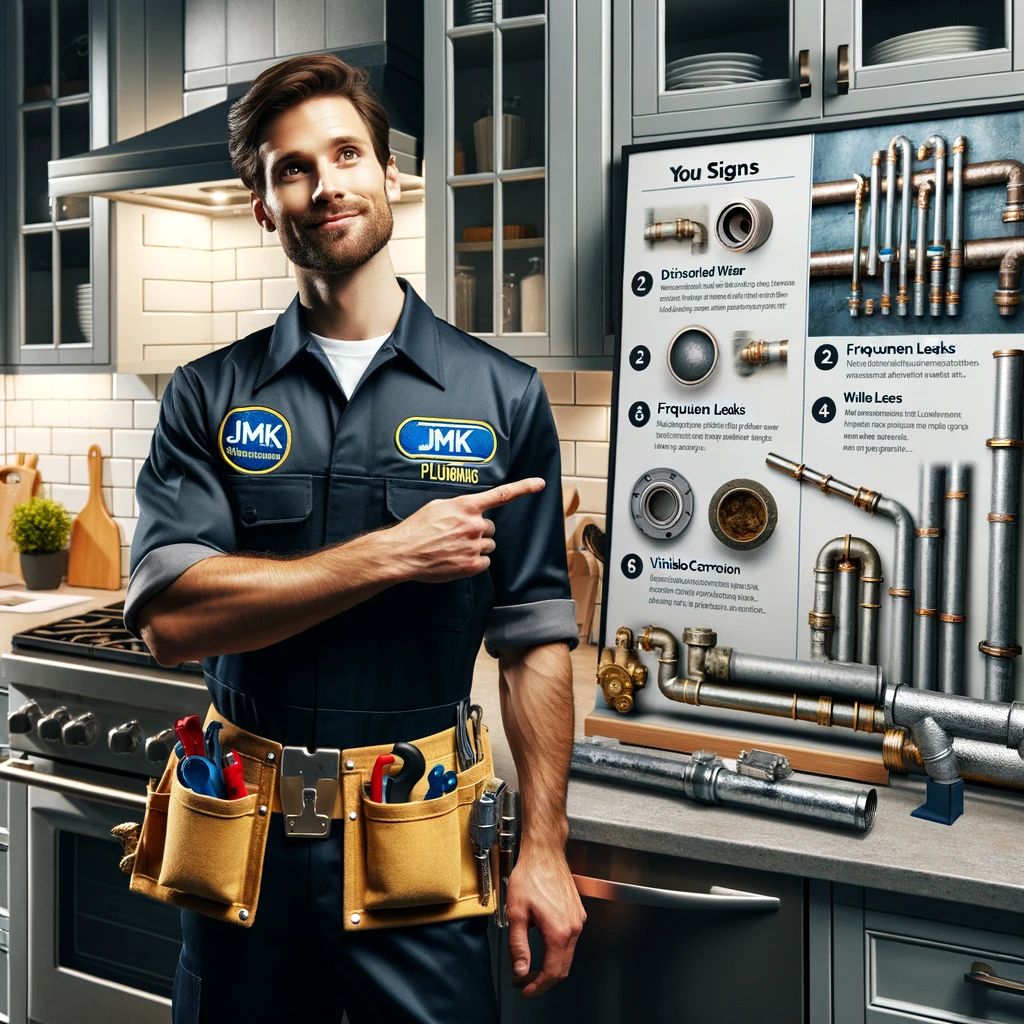Signs You Need to Replace the Pipes in Your Home

At JMK Plumbing, we understand the importance of maintaining the integrity of your home’s plumbing system. Plumbing issues often start as minor inconveniences but can escalate into expensive disasters if not addressed in a timely manner. It’s crucial to be proactive and recognize the signs that indicate a need for pipe replacement in your home. This detailed guide will help you identify these signs, enabling you to take the necessary actions to safeguard your home and ensure your peace of mind.
The age of your pipes is a key factor to consider
The lifespan of pipes varies depending on the material from which manufacturers make them. Copper pipes, for example, can last up to 50 years, while galvanized iron pipes have a lifespan of about 20 to 50 years. If your home is over 50 years old and you have never replaced the pipes, it strongly indicates that it’s time for an inspection and potential replacement. The aging process can lead to a range of issues, from corrosion to diminished functionality, highlighting the need for timely intervention.
A significant decrease in water pressure
Obstructions, leaks, or corrosion within the pipes can severely restrict water flow, leading to a noticeable drop in pressure. Especially if you experience this decrease in pressure throughout the house and not just isolated to one faucet, it signals that your plumbing system requires immediate attention. Ignoring such a symptom can lead to more severe problems down the line.
The appearance of discolored water or a peculiar taste or smell
When taps release brown or reddish water or if the water has an unusual taste or odor, it’s often because the pipes are corroding. This corrosion process not only compromises the structural integrity of your pipes but also poses a risk to your water’s quality and safety. Such a clear sign of deterioration should prompt an immediate inspection and consideration for pipe replacement.
Experiencing frequent leaks
While occasional leaks might be fixable with minor repairs, a pattern of frequent leaking suggests that the overall condition of your piping system is compromised. Overlooking such leaks can lead to extensive damage, not only to the plumbing system itself but also to the structure of your home, emphasizing the importance of proactive measures.
Strange noises emanating from your pipes
Unusual sounds, such as banging, buzzing, or whistling, often point to pressure imbalances or the onset of pipe failure. Do not ignore these auditory clues, as they provide early warning signs that something is amiss within your plumbing system.
An unexpected increase in your water bill
Leaks that are not visible to the naked eye, such as those within walls or under floors, can still have a significant impact on your water usage and, consequently, your bill. An unexplained spike in water costs warrants a thorough investigation to identify and address any leaks.
Visible signs of damage to your pipes, such as corrosion, rust, or cracks
Regular inspections of your plumbing can reveal physical signs of wear and tear. These visible cues are critical indicators that your pipes may be nearing the end of their useful life and require replacement to prevent more serious issues and emergencies.
Experiencing changes in water pressure during the use of multiple faucets or appliances
If your household’s water demand causes noticeable drops in pressure, it suggests that your piping system is not equipped to handle the load. This condition can result from either undersized pipes or extensive wear and tear, underscoring the need for a comprehensive evaluation and potential upgrade.